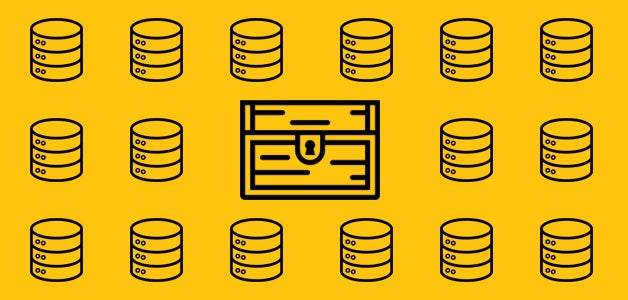
When you have something valuable, the more you have of it, the richer you become. This applies to gems, precious metals, and any number of valuable resources. The same is true for more intangible assets. Having more time or talent increases the overall value of those treasures too.
In the Age of Big Data, countless companies are turning their wealth of data into an extremely valuable asset. Unfortunately, the same is not true for many nonprofits and their data. In my bestselling book, Data Driven Nonprofits, I call this the Nonprofit Data Paradox: the more you have of something valuable, the less valuable it becomes.
In the book, I explore how nonprofits struggle with maximizing the value in their data. It should be a valuable asset that enriches nonprofits and helps them grow. Instead, many get overwhelmed by the flood of data, fail to maintain it, or choose to ignore it all together.
Data is fragmented in across multiple systems and structures. Donors, members, alumni, activists, volunteers, and any other group the nonprofit engages with are kept apart in their data cages. The data piles up and up. Oceans of data in silos. Gathered up in the digital attic for storage. Hidden hoards instead of hopeful treasure. The more you have, the less valuable it becomes.
Let’s start by noting that the data nonprofits have about their supporters, volunteers, activists, members, and other constituent groups is arguably the most valuable asset they have. If data was listed on a nonprofit organization’s balance sheet, then it would likely be worth more than just about anything else. The data is immensely valuable because it is the raw material of information and insights.
If you want to know the answer to an important question like which supporters are the most loyal, which email campaigns have been the most successful, or what programs need to improve the most, then you need to leverage your data. Relying on tribal knowledge or gut instinct alone will not help you drive results. The hidden treasure can be found everywhere in a nonprofit organization’s data.
Raw data can be turned into treasure using modern alchemy like predictive analytics. Target Analytics’ research across thousands of nonprofit organizations reveals that a lot of money is being left on the table. The average nonprofit is missing out on $3,781,461 in untapped giving potential. That is a combination of under-asking with both annual gifts and major gifts. The analysis revealed that an average upgrade capacity of $52 was possible for annual donors and a potential lift $1,197 existed for major donors. The modern day Merlin makes modeling magic more mainstream using data science.
The future of the nonprofit sector is one in which passionate professionals are armed with data insights to maximize their performance in critical areas. In the future, there are more donor-centric organizations because they made the choice to leverage data to build relationships at scale. Nonprofits are more accountable and transparent in the future thanks to the use of data and metrics. This is an exciting time to work in the nonprofit sector and the opportunities in front of organizations are immensely valuable.
